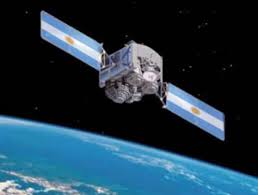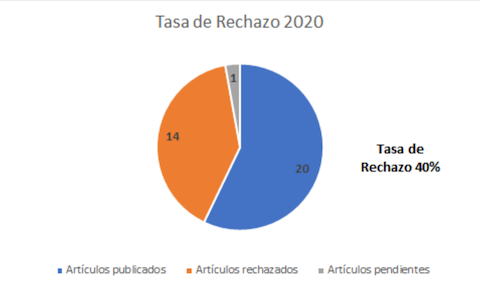From Technological Capabilities Accumulation to Geostationary Planification in Argentina
DOI:
https://doi.org/10.18667/cienciaypoderaereo.676Keywords:
Argentina, aerospace industry, artificial satellites, communication satellitesAbstract
During the last 25 years, Argentina has reached a relevant series of technological milestones by designing and building its own satellites, including four in cooperation with the nasa, two that carry the largest radar antenna placed on a satellite for civil purposes, and two geostationary telecommunications satellites. In 2015, the Congress of the Argentine Nation enacted a law that approved and declared the “Argentine Geostationary Satellite Plan 2015-2035” as a matter of national interest. The Law includes a plan for the construction of geostationary telecommunications satellites. The objective of this paper is to analyze to what extent the Law approved by the Congress enables the preservation of accumulated technological capabilities in the space sector or has the capacity to do so in the future. The methodology used to achieve this objective consisted of a review of the existing literature on the Argentine satellite industry, semi-structured interviews with referents of the ecosystem in different cities of Argentina, and the study of the law and current regulations. Based on the analysis of the technical and economic aspects of the law, and the existing deviations as of July 2020 with respect to the satellite construction chronology programmed in its annex, this paper finds that non-compliance is a factor that endangers highly valuable resources such as geostationary orbital positions or the technological capabilities accumulated on the basis of the nuclear developments initiated in the late 1940s. In addition, it was found that the law lacks criteria that incorporate the fluctuating technological and economic dynamics of the sector. To conclude, the paper discusses the implications of this law for the sector and proposes a series of elements to consider in the prearranged updating of the satellite construction plan.
Downloads
References
Anselmo, L., & Pardini, C. (2019). Dimensional and scale analysis applied to the preliminary assessment of the environment criticality of large constellations in LEO. Acta Astronautica, 158, 121-128.
Lee, S., Wu, Y., & Mortari, D. (2016). Satellite constellation design for telecommunication in Antarctica. International Journal of Satellite Communications and Networking, 34(6), 725-737.
López, A., & Pascuini, P. (2018). Institucionalidad y cambio tecnológico en las telecomunicaciones satelitales argentinas. Serie de documentos de trabajo del IIEP.
López, A., Pascuini, P., & Ramos, A. (2017). Al infinito y más allá: una exploración sobre la economía del espacio en la Argentina. Serie Documentos de Trabajo del IIEP Nº 17, 1-61.
López, A., Pascuini, P., & Ramos, A. (2018). Climbing the Space Technology Ladder in the South: the case of Argentina. Space Policy, 46, 53-63.
López, A., Ramos, A., & Pascuini, P. (2019). Economía del espacio y desarrollo: el caso argentino. CTS: Revista iberoamericana de ciencia, tecnología y sociedad, 14(40), 11-133.
Orvola, A., Nogueira, R., & Chimenti, P. (2020). The Present and Future of the Space Sector: A Business Ecosystem Approach. Space Policy, 52. doi:10.1016/j.spacepol.2020.101374
Pardini, C., & Anselmo, L. (2020). Environmental sustainability of large satellite constellations in low earth orbit. Acta Astronautica, 170, 27-36.
Qu, Z., Zhang, G., Cao, H., & Xie, J. (2017). LEO satellite constellation for Internet of Things. IEEE Access, 5, 18391-18401.
Quiroga, J. M., & Aguiar, D. (2016). Abriendo la "caja negra" del radar. Las políticas de radarización para uso civil y de defensa en Argentina entre 1948 y 2004. H-industri@, 10(19), 71-100.
Urbina Carrero, J. C. (2017). El espacio, futuro de la fuerza aérea colombiana. Ciencia y poder aéreo, 12, 202-208. Obtenido de https://publicacionesfac.com/index.php/cienciaypoderaereo/article/view/572/741
Wood, D., & Weigel, A. (2012). Charting the evolution of satellite programs in developing countries - the Space Technology Ladder. Space Policy 28 (1), 15-24.
Xu, J., & Zhang, G. (2018). Design and Transmission Performance Analysis of Satellite. IOP Conference Series: Materials Science and Engineering, 452, 042092. doi:10.1088/1757-899X/452/4/042092 https://doi.org/10.1088/1757-899X/452/4/042092

Downloads
Published
Issue
Section
License
Assignment of Copyrights
Authors assign Ciencia y Poder Aéreo journal the exclusive rights (reproduction, distribution, public communication, and transformation) to exploit and commercialize their work, in whole or in part, in all the formats and modalities of present or future exploitation, in all languages, throughout the life of the work and throughout the world.
All contents published in Ciencia y Poder Aéreo journal are licensed under a Creative Commons Attribution 4.0 International License, whose complete information is available at http://creativecommons.org/licenses/by/4.0/
Under the terms of this license, users are free to download, print, extract, archive, distribute and publicly communicate the content of articles, provided that proper credit is granted to authors and Ciencia y Poder Aéreo, scientific journal of the Graduate School of the Colombian Air Force. Except when otherwise indicated, this site and its contents are licensed under a Creative Commons Attribution 4.0 International License.
For other uses not considered under this license it is required to contact the Director or the Editor of the journal at the e-mail address cienciaypoderaereo1@gmail.com.
The Graduate School of the Colombian Air Force and this publication are not responsible for the concepts expressed in the articles, including the metadata or the affiliation stated by authors. This is the full responsibility of the authors.





















